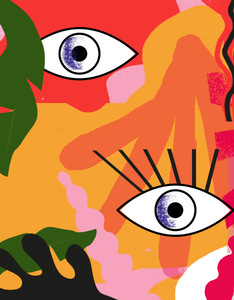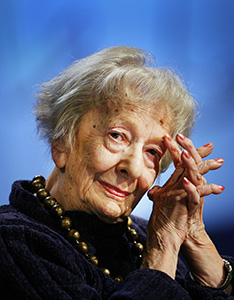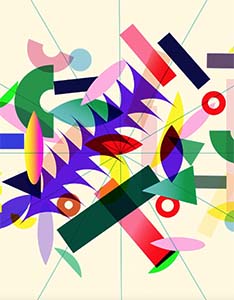“Records of Waiting” in the Polish Pavilion at the London Design Biennale 2025
The “Records of Waiting” exhibition, transforming the intangible experience of the passing of time into the material substance of a sculpture installation, has been opened on 5 June in the Polish Pavilion at the London Design Biennale 2025. The curatorial team made up of Jakub Gawkowski, Monika Rosińska and Maciej Siuda draws on the woodcarving traditions of Poland’s mountain regions and uses ornaments to visually represent the process of waiting. Waiting is considered to be both a purely aesthetic and political experience. It is deemed a tool for exercising control, but also a potential empowerment enabler. The exhibition organised by the Adam Mickiewicz Institute will be open until 29 June 2025.
The point of departure for the entire project is the paradox of the contemporary approach towards time. Although our reality is defined by a continuous time deficit and the relentless pace of its passing, the duress of waiting - a process in which we are deprived of control and agency when it comes to managing our own time - is an equally common experience. The curatorial team of the “Records of Waiting” exhibition takes a closer look at various dimensions of this experience. By using an ornament as a visual representation of the passing minutes, hours and months, the exhibition presents the process of waiting as a significant but insufficiently researched phenomenon. The curatorial team consisting of Jakub Gawkowski, Monika Rosińska and Maciej Siuda was inspired by the tradition of woodcarving from the mountain regions of Poland. The craft originated from shepherds who used the long periods of grazing sheep and the winter months to carve decorative patterns in various wood objects. By using the historic background as a pretext for deeper reflection, the exhibition shows how a material culture from the past may be relied upon today to tell a story about contemporary inequalities, tensions, and experiences related to the passing of time.
The wooden, hand-carved installation will represent twelve situations from contemporary Poland in which waiting plays a significant role. These include hours spent in daily traffic jams, weeks of waiting for rain during periodic drought periods, long years of repaying a house mortgage, months of tension while awaiting a residency permit or standing by for a state healthcare system appointment with a psychiatrist. The process of waiting is depicted both as an individual experience and as a crucial phenomenon in the context of the condition of the society. An occurrence that is inextricably linked with our social position and status.
Not everyone is waiting equally long. The heart of the exhibition is an installation whose wooden surface presents various experiences involving waiting: it evokes the struggle of bureaucratic delays, the silent tension of social crises, the trained patience of a taxi driver or a night guard, and the tedious repetitiveness of street traffic. Each part of the installation, shaped by the hands of craftsmen, as well as teachers and students from various schools in Zakopane, relies on highly detailed ornamental patterns to reflect the duration and the intensity of those scenarios, thus creating an embellished landscape of a society in wait - say the members of the exhibition’s curatorial team made up of Jakub Gawkowski, Monika Rosińska and Maciej Siuda.
The exhibition is supplemented by materials collected during the research phase preceding the creation of the installation proper. The materials presented on the walls include, inter alia, the following: a list of traditional woodcarving patterns from Poland’s mountain regions along with information on the time required to make each of them, as well as data on the process of waiting by people from various social groups, based on statistical information and their personal stories. All that adds a tangible and measurable dimension to the passing of time - a phenomenon that we sometimes experience “by accident”, without much consideration.
"I greatly value the rich and layered work of Jakub Gawkowski, Monika Rosińska, and Maciej Siuda. The artists show that what we usually perceive as wasted time – waiting – can become a space for meaningful reflection. They also emphasize the importance of research-based design as a powerful way to speak about social realities – inequality, frustration, and the emotional landscape of contemporary life, using Poland as a case in point. Another remarkable aspect of the project is its fresh take on the language of ornament—a captivating yet often overlooked part of history. This traditional form, rooted in the Podhale region, is reimagined with universal relevance. The project prompts us to consider: how many beautiful things could we create while we wait? It’s precisely these thoughtful connections that make A Record of Waiting such a strong and relevant contribution to the international stage of the London Design Biennale says Olga Wysocka, Director of the Adam Mickiewicz Institute.
Curatorial and research team: Jakub Gawkowski, Monika Rosińska, Maciej Siuda
Design: Maciej Siuda Pracownia
Graphic design: Noviki
Woodcarvers: Józef Bukowski, Anna Bukowska, Wojciech Bachleda-Dorcarz, Magdalena Bilczewska-Wiśniewska, Jan Kassowski, Michał Kassowski, Szymon Kassowski, Stanisław Kośmiński, Wojciech Łacek, Andrzej Mrowca, Marcin Rząsa, Franciszek Rząsa, students of Antoni Kenar Visual Arts Secondary School in Zakopane, students of Władysław Matlakowski Construction School Complex in Zakopane
The London Design Biennale is an international exhibition promoting cooperation and the global role of design. It achieves the said objectives by relying on exhibitions and installations intended to create universal solutions and ways to counteract the outcomes of problems in the supranational dimension. The leading theme of this year’s edition of the London Design Biennale - “Surface Reflections” - aims to encourage artists to seek an answer to the question about the impact that personal experiences exert on the creators themselves and on their artistic projects.
The Adam Mickiewicz Institute has been showcasing Poland’s design solutions during the London Design Biennale for several years now. In 2023, the Polish Pavilion, with its “Poetics of Necessity” exhibition, won the prestigious top prize at the London Design Biennale. The acclaimed project by Zofia Jaworowska, Petro Vladimirov and Michał Sikorski was dealing with issues of assistance and cooperation in reaction to the war raging in Ukraine. In 2021, in turn, the Adam Mickiewicz Institute showcased “The Clothed Home: Tuning in to the Seasonal Imagination” exhibition by Alicja Bielawska, curated by Aleksandra Kędziorek. Since then, the exhibition became highly popular and was presented, inter alia, at the Design Biennale in Ljubljana, at the Architecture Triennale in Lisbon and at the Vilnius Gallery Weekend. It is also scheduled for another presentation at the Seoul Museum of Craft Art.
The project is co-funded by the Ministry of Culture and National Heritage of the Republic of Poland.
The Adam Mickiewicz Institute (AMI) brings Polish culture to people around the world. Being a state institution, it creates lasting interest in Polish culture and art through strengthening the presence of Polish artists on the global stage. It initiates innovative projects, supports international cooperation and cultural exchanges. It promotes the work of both established and promising artists, showing the diversity and richness of our culture. The Adam Mickiewicz Institute is also responsible for the Culture.pl website, a comprehensive source of knowledge about Polish culture. For more information please visit: www.iam.pl.
Media contact:
Klaudia Gniady
[email protected]
+48 609 092 949


